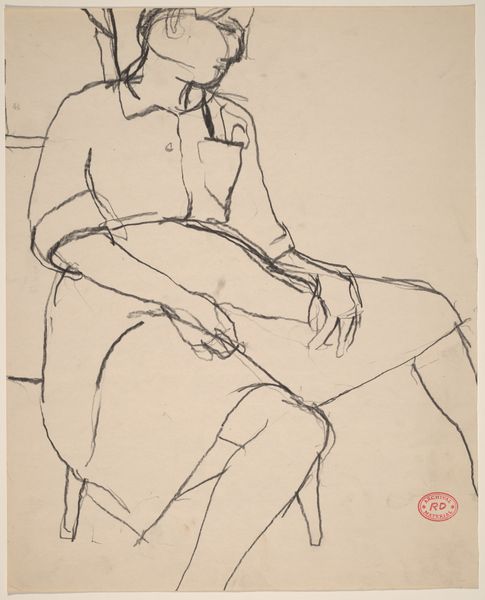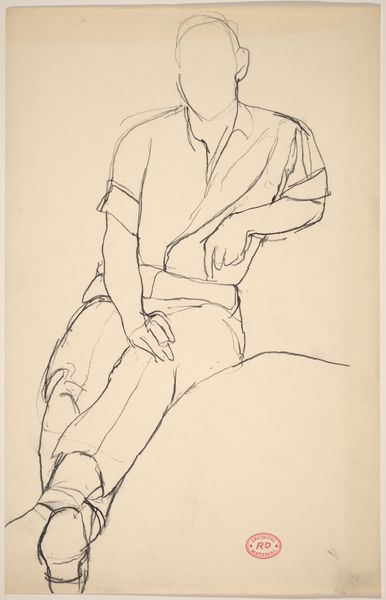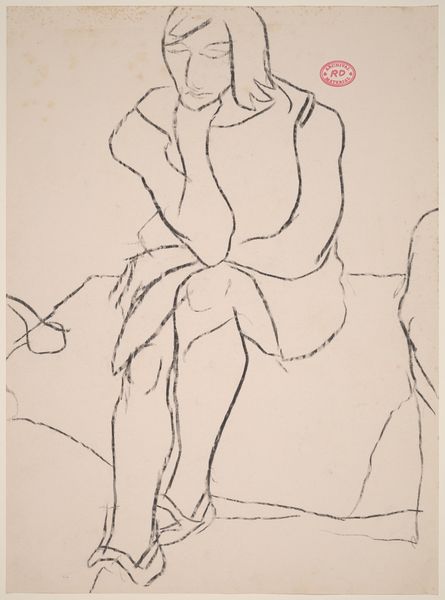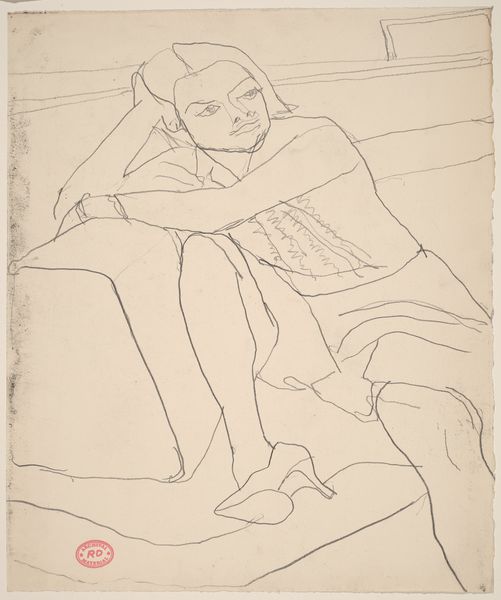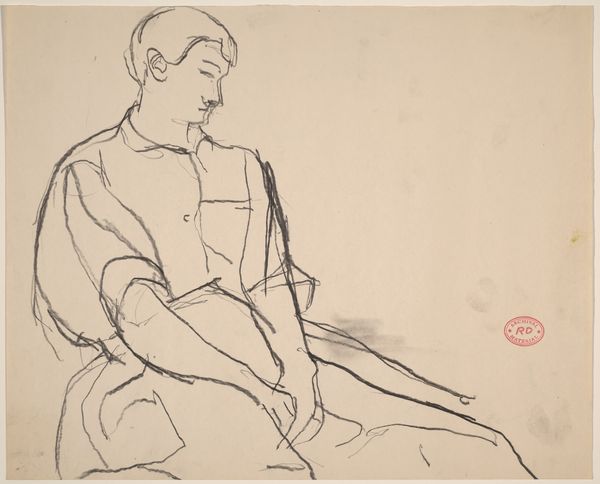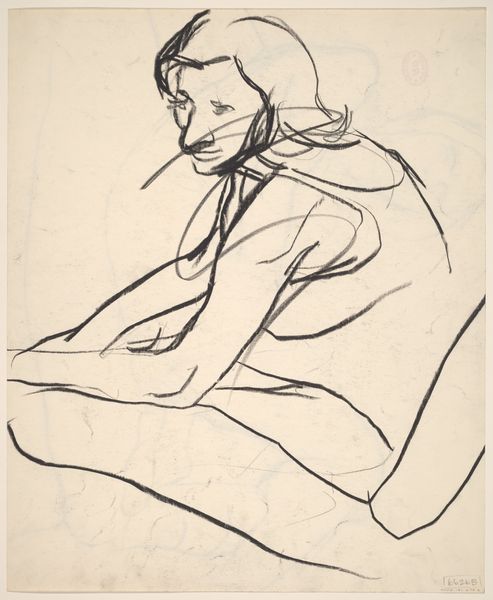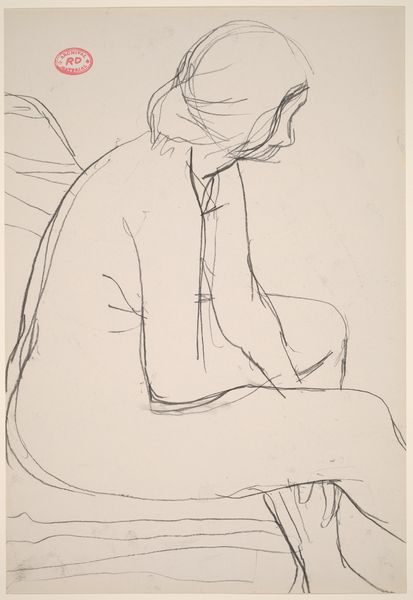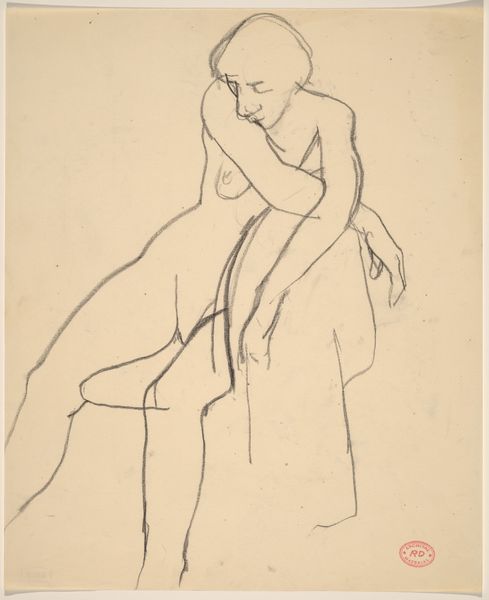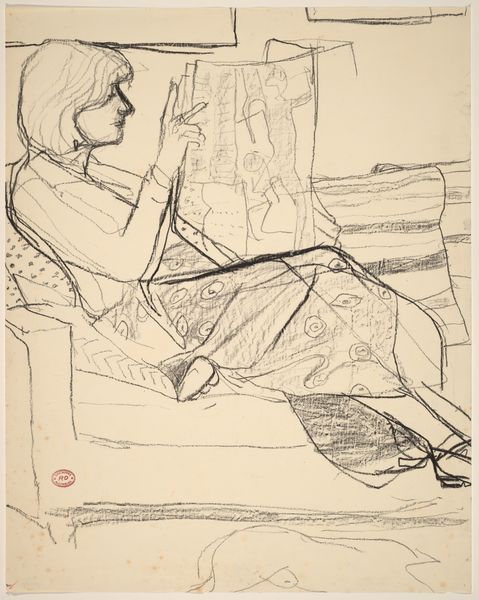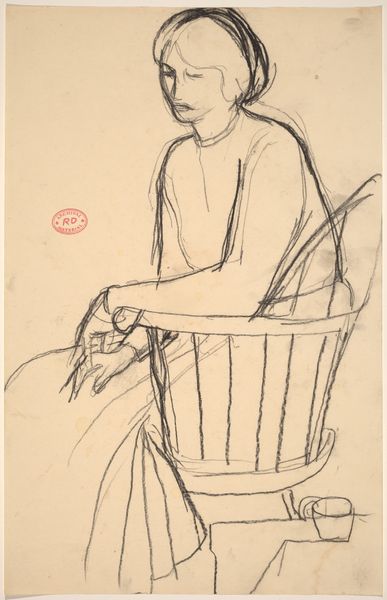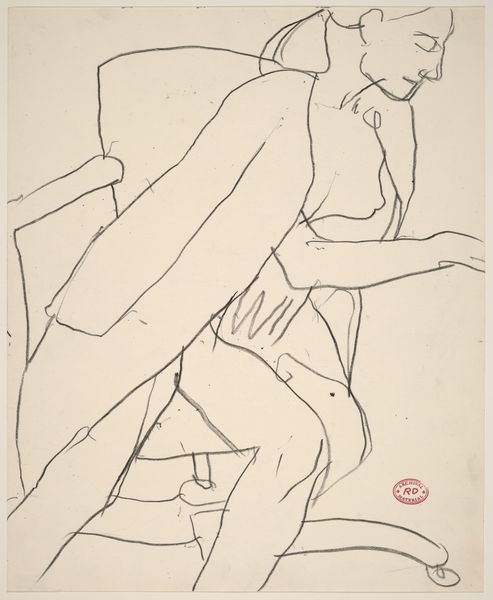![Untitled [woman seated on sofa with legs crossed] by Richard Diebenkorn](/_next/image?url=https%3A%2F%2Fd2w8kbdekdi1gv.cloudfront.net%2FeyJidWNrZXQiOiAiYXJ0ZXJhLWltYWdlcy1idWNrZXQiLCAia2V5IjogImFydHdvcmtzLzk0OGFkYTg0LTQ0ZTQtNGJhNy1hMDFiLTU3Y2RjYWE2YzAwZi85NDhhZGE4NC00NGU0LTRiYTctYTAxYi01N2NkY2FhNmMwMGZfZnVsbC5qcGciLCAiZWRpdHMiOiB7InJlc2l6ZSI6IHsid2lkdGgiOiAxOTIwLCAiaGVpZ2h0IjogMTkyMCwgImZpdCI6ICJpbnNpZGUifX19&w=3840&q=75)
Untitled [woman seated on sofa with legs crossed] 1955 - 1967
0:00
0:00
drawing, pencil
#
portrait
#
drawing
#
light pencil work
#
ink drawing
#
pencil sketch
#
figuration
#
personal sketchbook
#
bay-area-figurative-movement
#
idea generation sketch
#
ink drawing experimentation
#
pen-ink sketch
#
pencil
#
arch
#
sketchbook drawing
#
sketchbook art
#
initial sketch
Dimensions: overall: 28 x 21.7 cm (11 x 8 9/16 in.)
Copyright: National Gallery of Art: CC0 1.0
Editor: So, this drawing is called *Untitled [woman seated on sofa with legs crossed]*. It's by Richard Diebenkorn and thought to be made between 1955 and 1967, using pencil, seemingly on paper. It feels very intimate, almost like a private moment captured. What stands out to you most about this work? Curator: The perceived intimacy, as you mentioned, is key. Think about the post-war American art world. There was a desire for authenticity, to move away from grand narratives. Diebenkorn's choice of subject - a woman in a casual, domestic setting - and the sketch-like quality of the line, this is interesting, especially within the context of rising abstract expressionism at that time. How does this image function as a sort of refusal of a particular artistic, and almost masculine, aesthetic? Editor: I hadn't really thought about it as a response to abstract expressionism, more just a simple sketch. Are you saying Diebenkorn is consciously pushing against the art world's expectations by depicting everyday life? Curator: Potentially. The deliberate simplicity might be a subtle commentary on the perceived excesses of the art establishment. Who is allowed to create ‘serious’ art and what should that entail? Where did we expect to see women represented at this moment in time, and how? It's interesting that this piece seemingly dwells in the more quiet intimate aspects of home and leisure time. Consider also, the history of the figure, who do we find ourselves staring back at in terms of representation? Editor: That's fascinating. Seeing it in that context changes how I understand the artwork. I see more intention and commentary than I did at first glance. Curator: Precisely. It demonstrates how our understanding of art evolves when we consider its historical and social place. I now see it more fully realized.
Comments
No comments
Be the first to comment and join the conversation on the ultimate creative platform.
